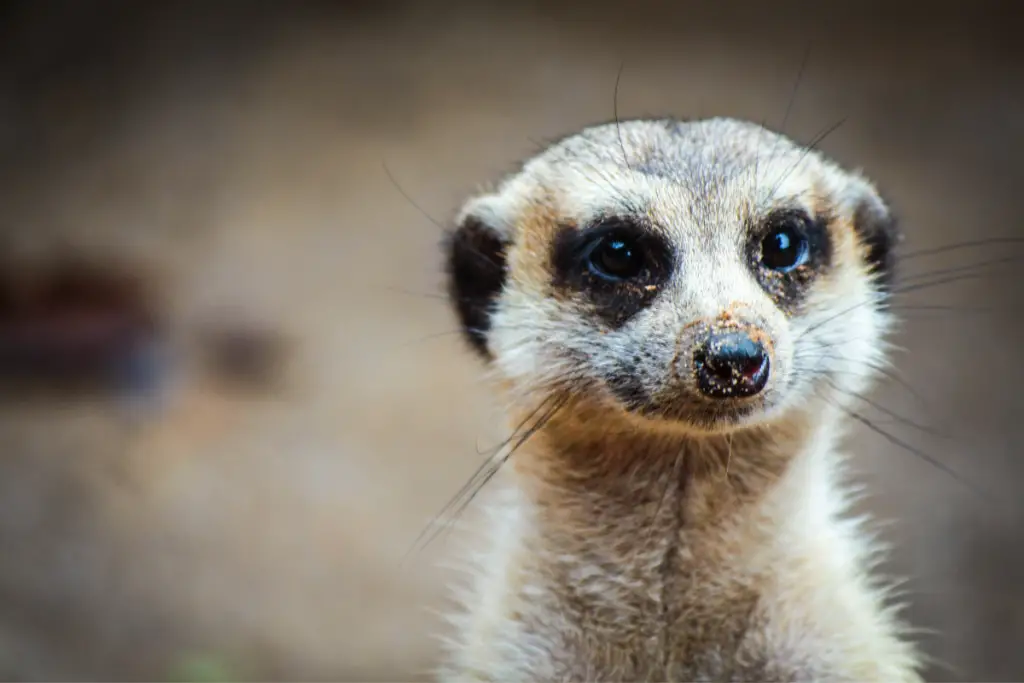Timon from the Lion King is a meerkat. What is a meerkat? Meerkats (Suricata suricatta) are small (<1 kg) mongooses found in arid regions of southern Africa.
They feed primarily on insects, arachnids, and small vertebrates, and spend much of their time digging in the sand in search of their prey. Unlike many other small mammals in these environments, meerkats are strictly diurnal. At night they seek refuge in sophisticated building systems. ; They emerge at dawn to roam their territory, which can stretch for several square kilometers and includes dozens of nocturnal burrows and hundreds of burrows that provide refuge from predators such as eagles or jackals.
What kind of a name is ‘meerkat’ anyway? Meerkat is the Germanic name for Cercopithecus monkeys, which in turn is probably derived from the Sanskrit for monkey, markata. Presumably the appearance and/or behavior of the explorers who first described meerkats resembled monkeys. So now you know.
Is Timon from Disney’s The Lion King a fair portrait of a meerkat? Not really… In the wild, a solitary meerkat is a rare, typically short-lived phenomenon; indeed, meerkats are known to be highly social animals. They live in groups of up to 40 individuals presided over by a dominant female and a dominant male who fathers most of the litters born in the group.
What is so special about the sociability of meerkats? Meerkats exhibit a rich repertoire of cooperative behaviors. At the end of a day’s foraging, watch a group of meerkats in their burrow and you’ll see dozens of individuals huddled together for warmth and grooming. You can also see excavation teams working together to maintain their construction tunnels.
During the day, when the group is foraging, individuals take turns guarding nearby bushes or termite mounds. These sentinels scan the sky and surrounding area, signaling the party at the first sign of impending danger. When rivals meet, groups of meerkats band together to defend their territories and the crucial burrows they contain. At other times they come together to protect themselves from larger predators such as cobras.
However, cooperation is most noticeable when it comes to the upbringing of the young. The matriarch gives birth to most of the group’s offspring, but raising these young is a responsibility shared by all members of the group.
Later, when the pups go foraging with the group, the helpers provide them with much of the prey they find. Is life as a meerkat a utopian idyll? be found without its ugly twin conflict. Throughout the day, foragers often try to steal each other’s loot, but the most serious conflicts arise over who is breeding.
Males from rival groups seeking receptive females are often attacked by resident males, and dominant males jealously guard their mates during estrus. The struggle for supremacy is fierce: a coup is always a threat and a regime of harassment is necessary to maintain order in the ranks.If a female subordinate becomes pregnant, she risks brutal beatings or, worse, exclusion from the safety of the group.

Erzsebet Frey (Eli Frey) is an ecologist and online entrepreneur with a Master of Science in Ecology from the University of Belgrade. Originally from Serbia, she has lived in Sri Lanka since 2017. Eli has worked internationally in countries like Oman, Brazil, Germany, and Sri Lanka. In 2018, she expanded into SEO and blogging, completing courses from UC Davis and Edinburgh. Eli has founded multiple websites focused on biology, ecology, environmental science, sustainable and simple living, and outdoor activities. She enjoys creating nature and simple living videos on YouTube and participates in speleology, diving, and hiking.
🌿 Explore the Wild Side!
Discover eBooks, guides, templates and stylish wildlife-themed T-shirts, notebooks, scrunchies, bandanas, and tote bags. Perfect for nature lovers and wildlife enthusiasts!
Visit My Shop →
